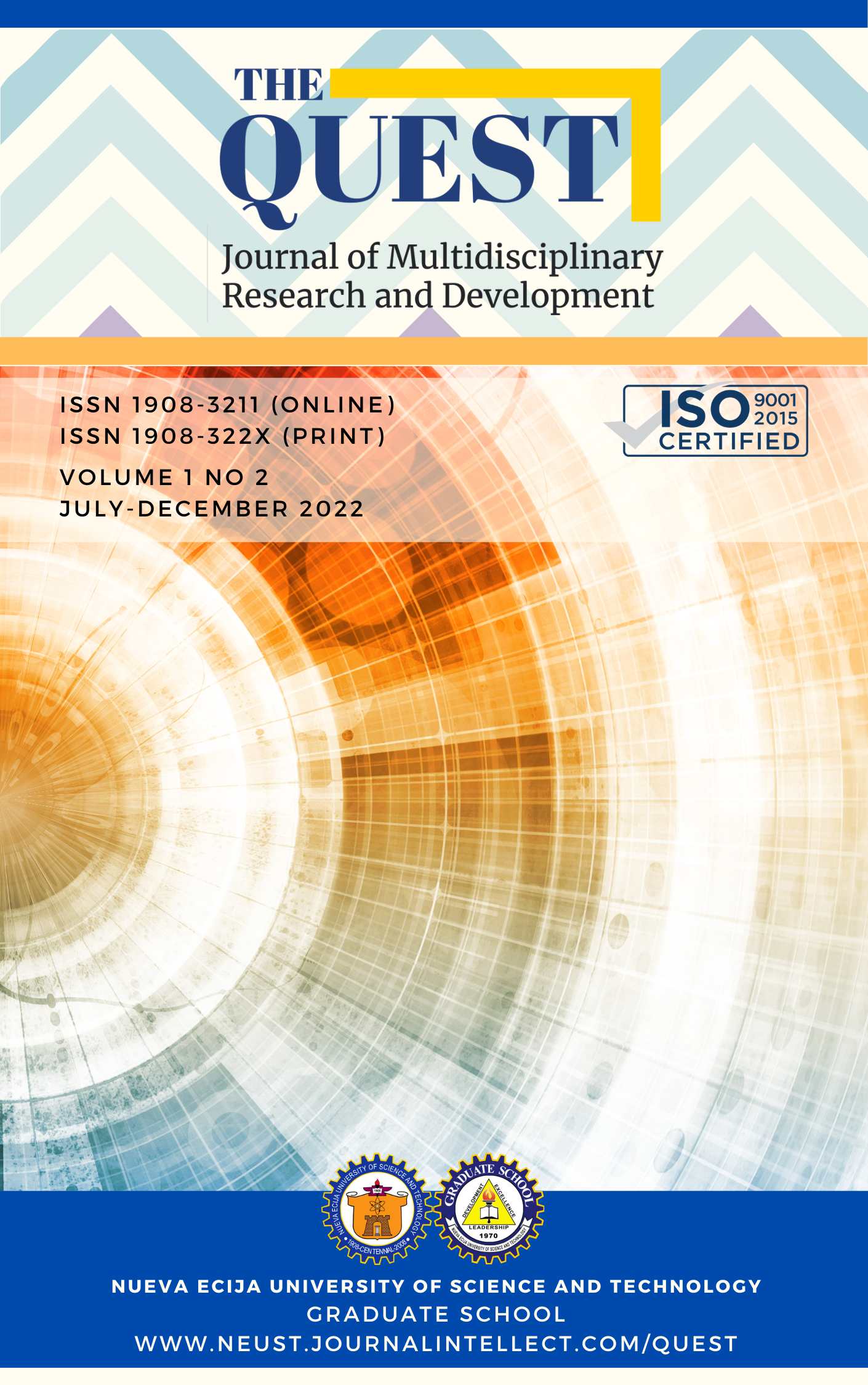A Study on Consumer Awareness on Food Adulteration

Published 12/30/2022
Keywords
- Adulteration Awareness,
- Food Safety
How to Cite
Copyright (c) 2023 The QUEST: Journal of Multidisciplinary Research and Development

This work is licensed under a Creative Commons Attribution-NonCommercial 4.0 International License.
Abstract
Food plays a major sustaining role for everyone. As living beings, we rely on food and water for survival, which is one of the necessities of mankind. Post COVID-19 is said to have increased focus on food safety. Due to Intensive agriculture, globalization of food trade, street food, mass catering, food safety has put a big question mark though technology and innovation exist. The main idea of food safety is to bring safe and nutritious food to the plates of the customer. There are several hindrances which lead to hazards in the health of the customers. The study is intended to analyze the extent of consumer awareness about food adulteration in Mangalore city. The study also analyzes the experiences of food adulteration. The Random sampling technique is used for data collection and for the analysis of data, SPSS 24 has been used. Friedman test, point biserial correlation test was used to analyze, compare and interpret the data. Problems encountered by consumers are correlated with various demographic variables. The findings of the study proved that there is strong need to spread the awareness about the food adulteration
References
- Afzal A, Mahmood MS, Hussain L, Akhtar, Masood (2011). Adulteration and Microbiological Quality of Milk (A Review). Pakistan Journal of Nutrition; 10(12):1195.
- Chodhary, A., Gupta, N., Hameed, F., and Choton, S., (2020). An overview of food adulteration: Concept, sources, impact, challenges and detection. International Journal of Chemical Studies, 8(1): 2564:2573. DOI: https://doi.org/10.22271/chemi.2020.v8.i1am.8655.
- Dhanvijay, V and Ambekar, R. (2015). Assessment of student’s awareness about Food Adulteration. International Journal of Informative & Futuristic Research. 2 (7): 2356 – 2361.
- El-Loly MM, Mansour AIA, Ramadan RO (2013). Evaluation of Raw Milk for Common Commercial Additives and Heat Treatments. International Journal of Food Safety. 15:7-10.
- Faheem, A., Nayak, B and Andrade, M (2013). Food adulteration and family’s knowledge on food adulteration in selected village of Udupi Taluk, Karnataka. Journal of Health and Allied Sciences NU, 3(2).DOI:10.1055/s-0040-1703650.
- Gupta, N and Panchal, P. (2009). Extent of Awareness and Food Adulteration Detection in Selected Food Items Purchased by Home Makers. Pakistan Journal of Nutrition. 8(5): 660-667.
- Jana, H and Basu, D (2019). Food adulteration: an emerging threat to human health in India. International Journal of Current Research, 11(6), page 4260-4264. DOI: https;//doi.org/10.24941/ijer.35580.60.2019.ISSN: 0975-833x.
- Joseph, A., Gelu, A., and Chithira, K.R., (2018). Consumer awareness on food adulteration, IJCRT volume6(1), page 63-69. ISSN: 2320-2882. www.ijcrt.org.
- Joshi, P.J., Khatri, N.G., Dave, P.H and Thakar, P.P. (2017). Awareness Regarding Food Safety and Consumer Protection amongst the Women of Dantiwada Village. International Journal of Pure Applied Biosciences. 5(1): 992-995.
- Jyotsna, K., Ambalika and Dubey, A. (2021). Critical analysis on food adulteration in India. International Journal of Creative Research Thought (IJCRT), 9(8). Page 521-528. ISSN 2320- 2882.
- Nagvanshi, D. (2015). A Study on Common Food Adulterants and Knowledge about Adulteration among Women of Rae Bareli District. International Journal of Home Science. 1(3):05-08.
- Narayan D. (2014). Food Adulteration: Types, worldwide laws and futures. Health care, 2014.http://www.biotecharticles.com/Healthcare-Article/Food-Adulteration-Types-Worldwide-LawsFuture3165.html.
- Nasreen, S and Ahmed, T (2014). Food adulteration and consumer awareness in Dhaka City 1995-2011. Journal of Health, Population and Nutrition.
- Parmar, I., Gehlot, P., Modi, V and Patel, D. (2022). Recent developments in food adulteration analytical techniques. International Journal of Pharmaceutical Science and Research, 13(5). ISSN 0975-8232, page 2001-2012. DOI: 10.13040/IJPSR.0975-8232.
- Prasanti, S. (2014). Surveillance of quality and adulteration of milk sold in and around Hyderabad and its public health significance. M.Sc. Thesis. Submitted to P.V. Narsimha Rao Telangana Veterinary University,Hyderabad.
- Sukumaran., Navya and Raju, K., (2017). Analysis of food adulterants in selected food items purchased from local grocery stores. International Journal of Advances in Scientific Research, 3(7):82. DOI:10.7439/ijasr.v3i7.4299.
- Thakur, M., Indrajit, W and Singh, A. (2009). Impact of health education package on knowledge and practices of women regarding food adulteration. Nursing and Midwifery Research Journal. 5(1): 1-9
